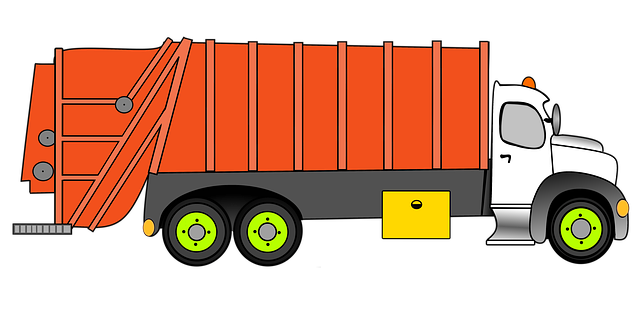Learn how to navigate the California vehicle registration process smoothly and efficiently. This guide breaks down every step, from gathering essential documents to understanding the crucial role of DMV in VIN verification. We walk you through the process of registering a car with the DMV, highlighting common issues and offering tips for a hassle-free experience. By following these simple steps, you’ll be on your way to securing your vehicle’s registration in no time.
- Understanding the California Vehicle Registration Process
- Gathering Necessary Documents for Car Registration
- The Role of DMV in Car Registration and VIN Verification
- Steps to Register a Car with DMV in California
- Common Issues and Tips for a Smooth Registration Experience
Understanding the California Vehicle Registration Process

Understanding the California Vehicle Registration Process
In California, registering a car involves several key steps, beginning with gathering essential documents and ensuring your vehicle meets all legal requirements. The process is facilitated by the Department of Motor Vehicles (DMV), which offers both in-person and online registration options. One crucial aspect of the registration process is the DMV’s Vehicle Identification Number (VIN) verification, which ensures that your vehicle matches the information on record with the manufacturer. This step is vital to prevent fraud and ensure the safety of California’s roads.
Additionally, many Californians opt for a mobile VIN inspection or mobile VIN verification service to streamline the process further. These services send a professional to your location to conduct the VIN check using advanced technology, saving you time and effort. By leveraging modern tools like these mobile vin verifiers, you can quickly clear any potential hurdles in registering your vehicle, making the overall experience more efficient and hassle-free.
Gathering Necessary Documents for Car Registration

Before heading to the California Department of Motor Vehicles (DMV) to register your car, it’s crucial to gather all the necessary documents for a smooth process. This typically includes proof of ownership, such as a bill of sale or previous registration, a valid driver’s license, and current vehicle insurance. Additionally, you’ll need to complete a Vehicle Registration Application form, which can be obtained from the DMV website or picked up in person.
One important step that facilitates this process is performing a DMV vin verification, which involves checking your car’s unique Vehicle Identification Number (VIN). You can do this online through the official DMV portal or by utilizing a mobile vin inspection service, making it easier to ensure the accuracy of your vehicle’s details before registration.
The Role of DMV in Car Registration and VIN Verification

The Department of Motor Vehicles (DMV) plays a pivotal role in facilitating car registration and ensuring vehicle safety in California. When you’re ready to register your car, the DMV conducts a thorough process that includes verifying the Vehicle Identification Number (VIN). This critical step involves checking the vehicle’s history, ownership details, and any potential recalls or issues associated with the specific VIN. A key component of this verification is the mobile VIN inspection, which allows for on-site checks, enhancing efficiency and convenience for both customers and DMV staff.
By utilizing advanced technology to perform dmv vin verification, California residents can rest assured that their vehicle registration process is secure and accurate. This verification step not only protects against fraud but also ensures that all vehicles on the road meet safety standards. Whether you opt for a traditional or mobile vin inspection, the goal remains the same: to create a seamless car registration experience while maintaining the integrity of California’s automotive regulations.
Steps to Register a Car with DMV in California

Registering a car with the DMV in California involves several straightforward steps. First, gather all necessary documents, including your vehicle’s registration certificate from the previous state, proof of insurance, and a completed Application for Title and Registration (DMV Form 700). Next, visit a California DMV field office or use their online services to initiate the process. For convenience, many customers opt for a mobile vin inspection or a mobile vin verifier to complete the required vehicle identification number (VIN) verification.
Once at the DMV, you’ll need to present your documents and pass an emission test if applicable. After all requirements are met, you can proceed with the title transfer and register your vehicle. This process ensures that your car is legally recognized in California, allowing you to use its roads without penalties related to unregistered vehicles. Always remember to keep your registration up-to-date for smooth driving experiences.
Common Issues and Tips for a Smooth Registration Experience

When registering a car in California, many individuals encounter common issues that can prolong the process and cause unnecessary stress. A frequent challenge is the DMV VIN verification, where discrepancies or errors in vehicle identification number (VIN) data might delay registration. To streamline this step, consider using a mobile vin verifier for on-site inspection, ensuring accuracy and saving you time.
Another tip to ensure a smooth experience is preparing all necessary documents beforehand. This includes having your title, registration application, and valid identification ready. Some people also opt for a vin inspection from a trusted mobile service to avoid long waits at traditional verification centers. By being organized and utilizing available resources like these services, you can navigate the registration process more efficiently.
Registering a car in California is a straightforward process that requires understanding the necessary steps and gathering all the required documents. The DMV plays a crucial role in ensuring vehicle safety through VIN verification, making it an integral part of the registration procedure. By following these simple steps and being prepared with the right paperwork, you can efficiently navigate the car registration process in California, ensuring your vehicle is legally recognized on the state’s roads.
